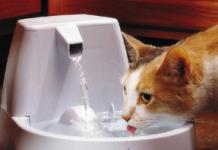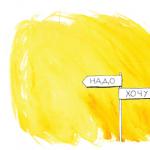When working with wires for various purposes, it constantly becomes necessary to connect them to electronics or other household appliances. To perform this task, it is customary to use a special tool - pliers for crimping the lugs of a particular cable. This article will provide general information about this type of press, what types they are conditionally divided into and how to use them during installation or repair work.
Due to the fact that with the development of technology, new types of cable connections were invented for different purposes, with different power and conductivity, their design also changed. In order to prepare the contacts of the leading wires, their lugs should be crimped in an appropriate way. The solution to this problem was the use of crimping pliers.
Very often they are used by radio amateurs, auto mechanics and electricians. Such a tool can be used to press the contacts of both conventional cables and specific connectors for non-standard connectors (network cable for a computer), various terminals. To date, crimping pliers are considered one of the most common tools for such work. It is cheap to produce, affordable and effective.
Its design allows you to effortlessly press the tips. The principle of the press is capable of reliably and efficiently crimping cables. As a result, there is a very strong connection between all conductors and the connecting structure itself. The cost of a crimping tool can usually be affected by several factors - the manufacturer, the type of construction, the quality and material of the final product.
Tool types

First of all, it should be noted that there are now many manufacturers of crimping pliers that make them to various standards. In the end, you should get a tool that can have a narrow purpose (pressing only a certain kind wires), and wider ( universal pliers for household structures and production). For this reason, the consumer should immediately have an idea of what type of pressing tool he will need.
IN living conditions such a crimping tool may be suitable for working with stranded wires electrical network: sockets, switches, lighting, energy meters and more.
Pressing tongs provide a high-quality and safe electrical and mechanical connection. Usually, the division into types of a given instrument is made on the basis of them. Crimping pliers are classified as crimping equipment. They are often required to work with low current systems to secure contacts.
So the tool itself can be divided into several types depending on its purpose. For removing the sheath from the cable and its insulation. This type of pliers allows you to quickly and accurately cut off the required section of insulation on the wire without damaging the core itself. They can be adjusted to a specific diameter that should be removed from the core. The setting can be done manually or you can choose automatic.

With manual adjustment, there will still be a chance of damaging the wire itself, and automatic adjustment will allow you to remove the braid under the consequences for the cross section of the cord. Often this type is used when working with distribution and junction boxes. The cutting edge must always be sharp so that the cutting of the outer insulation is done in one step, without chewing the wire in the tool.
For the press end sleeves. For this type of ticks, there are also several types, depending on the shape of their nests and shape. Nests can have plastic flanges, as well as be made without them. Able to be trapezoidal or intended for square pressing. Those that have sockets with plastic flanges in their design allow you to effectively crimp the lugs of the stranded wire, and their square shape able to ensure reliable contact of all cores. With such tongs it is very convenient to do mounting or centering for any type of section. For a more reliable and accurate contact press, the pliers must be selected according to the appropriate diameter (there is a color marking for them).
For insulated tips cable. Working with insulated contacts should be carried out with an oval-shaped tool. Usually in their matrix should be located 3 standard forms for the press, which can be distinguished by the colors - red, blue and yellow. Accordingly, for each of these colors, a tip, sleeves and other connectors are produced with the same color indicator.

Applying while working with insulated wires such pliers, it is imperative to ensure that the position of the butt edge is correct. The butt edge is located in the middle of the upper profile of the tongs. This design is dictated by the fact that with its lateral placement, the edge will be able to violate the reliability and tightness of fixing the cable itself.
For the press bare lugs cable. Used for non-insulated type of wire, as well as for open, made of brass. For the press in such pliers, a special rod is made. Therefore, the sleeve itself is crimped in the center, and the rod must be planted on the separation seam. Open end press pliers, which are made of brass, may have certain types clamps. One is for the wire and the other is for the insulation. In order for the press of open contacts to be reliable, it is worth attaching a locator to them. Such a device will ensure accurate positioning. If it is necessary to crimp the terminals, it is better to use suitable crimping pliers.
Video “Clamping and Insulation: Electrical Basics”
Principle of use
The principle of using contact press pliers in wiring can be understood from the workflow in which they will be required to be used. To work, you need a certain wire, the crimping tool itself and the connecting element itself, which should be placed at the end of the contacts. First of all, the outer insulation must be removed from the end of the wire. To do this, you need to use pliers. They should have a semicircular hollow, and on top of it cutting edge. You need to put the wire in this recess, then press the upper side with the blade. After making a couple of turns around the cable, the insulation will be cut. Now it can be removed without effort. For the correct press with reliable contact, it will be enough to strip 4 centimeters of the cord.

The next step is to align and place all the strands in desired sequence, as required by a certain type of connector. When the wires are straightened, they should be pressed tightly together and cut off, leaving 1-1.5 cm of contacts for connection. Then all the contacts must be placed in the connecting device itself, while maintaining their sequence. The vein establishment must be made to such a depth that the lower notch of the connector reaches the cable insulation. This is necessary in order not to damage it during crimping, since the notch itself is pressed very tightly, fixing the device on the cord.
After that in seat ticks should be placed device. Be sure to check the consistency of the colors of all cores. When they are in correct position, then compression can be performed. Final stage requires checking the connection for strength, as well as whether the connector itself is intact. Since there are a large number of working tools for such purposes, you can choose exactly those that are best suited for a particular type of connection.
Content:
For high-quality connection of contacts of devices, equipment, crimping of the ends of the cable and wires that are connected to them is used in electrical engineering - this method gives an excellent connection of conductive surfaces. In order to use crimping, you need lugs or sleeves that have different kind and appointment. The crimping method requires a special tool. Consider what tips are and how they are crimped.
Types of tips for crimping
For every inhabitant, a striking example of incorrect wiring is the stair switchboard, many apartment owners have melted wires in the switchboard, there are twists. Ferrules for wires for crimping can save citizens from the possibility of heating and ignition electrical wiring as a result of poor-quality wire contact, the absence of cable lugs.
When there is good contact between the cable or wire being connected and the connection device, the transition resistance is minimized, and with an increase in current load on the contact group, they can heat up in case of poor contact. Sleeves and tips are intended to remove or minimize the contact resistance, in other words, to exclude poor-quality contact, for a bolt or screw.
For crimping (crimping for lugs) of wires and cables, special products are used - lugs and sleeves. Tips can be for stranded wires and solid wire, they are divided according to the purpose and type of wire for which they are used (copper or aluminum).
For crimping the copper conductors of the cable, lugs made of seamless copper tube, which is flattened on one side and has a hole for a screw connection. This type of tips happens:
- With different diameters for a wire and a mounting hole that does not have protective coating;
- for crimping electrolytic tinned with different holes for fastening.
The marking of this type of tips is as follows:
- uncoated, TM - X - Y, where X is the cross section of the wire, Y is the size of the hole for fastening;
- coated, TML-X-U.

There is another type of lugs with a control window, these are tinned copper products for terminating cable and wire cores. A feature of this type is the ability of the termination performer to control the correctness of crimping through the control window. This type of product is marked as TML (o), it is noteworthy that they can be installed on the ends of cables using solder and soldering, which almost completely removes the value contact resistance.
Quite often in electrical engineering there is a connection of an aluminum wire with a copper cable, in this case it is recommended to use aluminum-copper lugs for a high-quality connection of an aluminum wire and a shield copper bus.

Decreasing overall dimensions devices and devices, pin products have become popular tips for ending. They are used in electrical equipment and circuit breakers in protection devices. With the reduction of clamping fasteners, the pin is the most optimal solution for good contact. This species is marked as NSHP.
Tips NShVI
Cable lugs for crimping NShVI are a pin sleeve product with insulation. Electrolytic copper is the material from which it is made, insulation is installed on the back side, which is thicker than the metal part. When the terminated wire is inserted into the socket with this lug, only its insulated part remains under the clamp. In industry and in everyday life, this type of lugs is used for cables up to 35 sq. mm in cross section, they are pressed special tool.

There are several modifications of this tip, which differ in the number of wires connected in one tip. For two cables, the marking has the form NShVI2, there are no structural differences in this lug, the same metal part and PVC cuff, but the diameter of the sleeve (skirt) is larger, designed for two wires.
Features of working with NSHVI
Cable lugs of this type are intended only for multi-core cables, they cannot be used in the termination of wires with one core. For rigid (single-core) wires, crimping is used with bushings (sleeves) without insulation. Crimping of stranded wire is carried out as follows:
- the wire section is selected, the brand of the tip is selected, into which the cores must enter freely and tightly from the side of the skirt;
- in practice, the type of tip is selected with some margin. Example: PV-3 wire with a cross section of 1.25 sq. mm can be terminated with a tip from 1.5 sq. mm. Skirt section - up to 2.5 sq. mm.
Tool
Crimping cable lugs is carried out with a special tool that is designed and manufactured for this purpose. A tool is necessary for crimping the lugs, since a person with a simple effort cannot create the necessary force for high-quality termination of the cable core. Which crimping tool to choose depends on the cross-section of the wire or cable that is being worked on. We list the most used tool:
- Press tongs of the PK2 or PK2M brand are a hand tool that is used in terminating the cores of wires and cables with a cross section of up to 10 sq. mm.
- Press tongs of the PK1 or PK1M brand are a reinforced version of manual tongs with long handles, they can make the end of lived up to 50 sq. mm.
- Tongs are hydraulic, manual, which without much effort can terminate the core up to 10 sq. mm.
- Hand press, which is used in industrial production for a wire with a section up to 240 sq. mm.
- Hydraulic press with electric drive or foot pedal, cable ends up to 300 sq.mm.

Crimping sleeves
Not in every device or device, switching an external circuit uses a cable lug, there is also a sleeve ending, its choice is made according to the type of wire being connected (copper, aluminum). For cables with copper conductors - marking of GML sleeves, where:
- G - product name, sleeve;
- M - the material from which it is made, copper;
- L - the product has a coating, tinned.
For aluminum wires GAO brand is selected: aluminum sleeve closed type. When it is necessary to make a connection with the transition of aluminum to copper, a product made of an alloy is selected. It is not allowed to use products for copper wires on aluminum conductors, this is a heat couple that will heat up due to the electrochemical reaction that takes place in the material of these conductors when connected.

Preparing for pressing
You can’t just put a cable tip on a core, you need to perform a number of preparatory steps:
- clean the desired length of the end of the wire or cable from insulation - you can use a special tool, a stripper;
- we twist the cores by hand and insert them from the side of the skirt into the tip;
- first, the tip is selected according to the cross section of the core, observing the conditions for free and tight entry into the tip sleeve.
Crimping of wires with tips is carried out with a special tool. On each press there is a marking of matrices and the main part according to the type of tip or the cross section of the core. Now the color standard is observed, for this reason it is easy to combine the section and the matrix in the desired position.

How to crimp a wire
In the event that you have not previously crimped cable cores, you need to practice on unnecessary pieces of wire or cable. To obtain a high-quality connection, you must adhere to the developed rules:
- The cable inserted into the sleeve (sleeve with a flare) of the tip must be held by hand in the socket.
- After making sure that the matrix matches the selected tip, you can begin to squeeze the handles of the press until the ratchet mechanism is activated and an audible click.
- The ratchet mechanism of the press simplifies the pressing process. The mechanism does not allow the press to unclench, and when the wire is crimped unsuccessfully, it must be unlocked.
- Double-circuit crimping compresses the insulated part of the ferrule and the metal contact. Such a matrix has two sockets, they are different in size, so you need to carefully look so that the cuff fits into its socket, and the metal contact of the tip into its own.

Conclusion
A wire must correspond to each lug, the most common mistake in crimping cable cores is the discrepancy between the selected lug and the wire material; you should not put on a too loose sleeve on the wire. Do not use products large diameter for termination of conductors of a smaller cross section, this can lead to an increase in contact resistance and heating of the contact. You can not cut the sleeve into two parts in order to save products, do not use homemade tips.
For high-quality crimping of cable cores, it is necessary to use a special tool, a chisel and a hammer will not be able to make the necessary compression, to give high-quality contact.
Crimping pliers for automotive and similar configuration terminals are indispensable when working with a car to perform electrical connections using connectors or such terminals. In the material, we will consider the features of the use of crimping pliers, their varieties and scope.
In the process of working with various cables there is a need to connect them to electronic and household appliances. For this purpose, crimping pliers for crimping various configurations and sizes are used for crimping wire lugs.
Since, in the course of the development of technology, new types of connecting wires for various purposes, with varying degrees of power and conductivity, were developed, the design of the cable connection was also subject to change. To prepare the contacts of the leading wires, their lugs must be suitably crimped with tongs.
Application of crimping pliers
Crimping pliers are widely used by radio amateurs, auto mechanics and electricians in the process. The use of pliers is indispensable for crimping the contacts of standard cables and specific connectors of a non-standard connector (for example, a network cable for a PC). Press tongs today standard size for crimping contacts are the best option to complete this task.
The design of the crimpers makes it possible to perform crimping easily and quickly, and the principle of operation ensures reliable and tight crimping. This ensures a strong connection between the conductors and the connecting element. The price of wire end pliers is determined by the manufacturer, type of construction, quality and material used.

Crimping pliers are designed for crimping insulated wires:
- NCI tips of ring type;
- tips NVI fork type;
- pin round tips NShKI;
- flat and plug connectors RPI-P, RPI-M, RSHI-P, RSHI-M;
- piercing couplers OV
- connecting sleeves GSI.
Sleeve crimping pliers are widely used for flexible wire strands in the process of connection circuit breakers, sockets, chandeliers and lamps.
Compression of connecting sleeves in the industry is carried out using hydraulic crimping tongs, which are designed for cable cores with a cross section of 16 to 240 sq. mm.
Further in the material we will tell you how to use manual and hydraulic crimping pliers, we will give the principles of their operation and application features. The pliers should be selected based on the cross section of the cable core.
The main types and varieties of ticks
Today, many manufacturers produce crimping pliers based on various standards. Buyers are offered pliers with a narrow scope (pressing a specific type of cable) or a wide purpose (universal production pliers). Therefore, before buying, you need to decide on the type of tool you need.
When used in everyday life, the tool can have a multi-profile purpose for crimping stranded wires of sockets, switches, chandeliers.
Pressing tongs create a strong and safe electrical and mechanical connection. Crimping pliers are classified as a type of crimping equipment, they are often required for fixing contacts in low current systems. Tools are divided into several varieties.
To strip wire insulation
With this tool, you can remove a section of insulation without damaging the core. Manual and automatic installation the required diameter to be removed from the core. In the case of manual diameter setting, there is a risk of damage to the wire, and automatic allows you to clearly remove the entire insulation layer. In most cases, this type is used for distribution and branch boxes. And you should pay attention to the sharpness of the cutting edge so that it does not chew the wire.
For press sleeves
Crimping pliers for end sleeves differ in their sockets and their shape. The sockets may or may not be equipped with plastic flanges. The plastic ferrules provide maximum crimping efficiency, and the square configuration ensures that all strands are firmly in contact. This type device allows you to easily cope with mounting or centering for any type of cable cross-section. For extremely tight fixation of the contacts, the pliers are selected according to the diameter in accordance with the color marks.
For insulated wire lugs
Crimping pliers for insulated ferrules are characterized by an oval configuration. According to the standard, the matrix provides three standard forms for the press, which differ in colors - red, blue and yellow. Accordingly, tips, sleeves and other connectors with similar colors are provided for them. When working with the tool, you must follow correct location joint edges, it should be in the middle of the upper edge of the pliers. This design is provided in such a way that when it is located on the side, the edge violates the tightness of the cable or wire.
For crimping non-insulated cable lugs
Such press tongs for crimping are used on bare wire, and on brass wires. For the press, a special rod is provided in the tool, which must be placed on the separation seam. Crimping tools open cable from brass can be provided for separate clamps - one for the core, and the second for the winding. To strengthen the press, it is recommended to use a locator that will provide a clear positioning.
Twisted pair crimping pliers
Twisted pair crimping pliers are provided for 8 or 4 cores, used to insert wires into the connector. For example, twisted pair is used when connecting a cable for a high-speed Internet connection.

Crimping with hydraulic tool
Crimping pliers with a hydraulic mechanism are designed for crimping cables with large diameter over 120 sq. mm for industrial purposes. Hydraulic crimping tongs are similar to wire cutters or pliers, where lever handles actuate the crimping jaws to shape the plastic connector. The result is a tight, secure connection.
Due to the presence of a hydraulic mechanism, the force to actuate the tool is significantly reduced. It becomes possible to clamp the connector in several approaches, gradually increasing the force. Majority professional tools equipped with a hydraulic mechanism.
How to work with crimping pliers
Crimping pliers for ferrules and sleeves suggest that the principle of their use for pressing contacts in a cable can be easily understood from the workflow in practice. To complete the task, you will need a specific wire, clamps and a connecting component that needs to be placed at the end of the contacts. Let's bring step by step instructions and the rules for using press tongs to perform crimping:
- remove the outer winding from the cable using pliers, on which there is a semicircular cavity on top, and a cutting edge on top;
- put the cable in the recess and press the upper edge with the cutting side;
- after several rotations around the wire, the insulation is cut along the entire circumference and can be easily removed;
- for a correct connection with a reliable contact, a stripping of 4 cm is allowed;
- align and arrange all the cores in the required sequence in accordance with the type of connector and the indicated color markings;
- when all the wires are straightened, clamp them and cut them, leaving 1.5 cm of contacts for further connection;
- put the pins in the connector, keeping their location. Twisting stranded conductors carried out strictly on the basis of the indicated colors according to the scheme. Insert the wires so that the lower notch of the connector touches the cable winding. This measure is necessary to minimize the risk of damage to the wire during the crimping process;
- place the device in the pliers, after checking the correctness of the colors. After checking, perform pressing;
- on last stage check the security and reliability of fixation, as well as the integrity of the connector.
Press pliers are an indispensable tool for crimping twisted pair, crimping insulated lugs and cables without insulation. The tools are available in various sizes, with manual or hydraulic crimping for industrial applications and large wire diameters.
The key to any quality electrical connection is the area of \u200b\u200bcontact of the wires - the larger it is, the more reliable the contact. Of course, all this is selected relative to the cross section of the connected wires, so the main thing here is to do without fanaticism. If the first connections of this type were long twists, crimped with pliers, now they are straight wires that crimp pliers fasten together inside a special crimping sleeve. The disadvantage of this connection method is the need to have a crimping tool and consumables in the form of bushings or lugs, but this is fully offset by an increase in the speed of work and an improvement in its quality.
Where are crimping pliers used?
Regardless of the size of the crimper, it has only two main uses - the preparation of current-carrying conductors for fixing them to the terminals of sockets, switches and other electrical appliances, as well as the connection of several wires to each other.

In the first case, crimping is justified if stranded wires are used. If they are clamped into the contact terminals without preparation, then over time, under the influence of an electric current (it creates microvibration), the veins will “shrink”, free space will appear between them and the contact will generally weaken.
This is one of the reasons why it is advised to use solid wires for laying power wiring, but with the spread of crimping devices for wire lugs, this recommendation has lost its meaning.
Crimping is also used when working with large-section cables - it was used even long before the advent of "household" devices. True, a high-quality connection can only be obtained using a special press for crimping cable lugs, which even now is far from being pocket-sized. To create the necessary force, such devices use the principle of a jack or a separate hydraulic drive - human force, even applied through a conventional lever, is not enough to compress a thick cable with high quality. An example of such a device in the video:
It will be useful to crimp and, if necessary, connect two or more wires. In this case, they are assembled together, a sleeve is put on them and crimped. In this case, the wires can be inserted into the sleeve both from one side and from both sides: in the first case, a kind of twist is obtained, and in the second - a coupling.

The advantage of this type of fastening is that after crimping, air does not penetrate into the sleeve - in fact, a tight connection is obtained. This allows you to connect in this way even copper and aluminum wires, the contact between which, under normal conditions, oxidizes over time.
Varieties of crimping pliers
Structurally, crimping pliers are divided into two main types - operating on the principle of pliers or diaphragm.
The first of them are more common - they perform squeezing only from two sides, but unlike pasatages, they have cutouts in the jaws. special form that act as guides. This allows you to perform high-quality fastening on the wire core of the lugs, the base of which in the cross section has a "P"-shaped shape.
In the video, various types of wire crimping tool:
The advantage of such devices that crimp wire cores is their relative versatility - they can “get close” to the tips from any side. The main drawback lies in the need to have several such pliers “on hand”, since cutouts for 3-4 cartridge sizes are usually placed on the jaws. As an option, you can purchase a universal crimping crimper with interchangeable dies, which are mounted on a special cassette. If you need to work with other types of tips, the old ones snap into place in the cassette and suitable ones are selected in their place.

Diaphragm devices can crimp sleeves from four or six sides - depending on the diaphragm mechanism. Due to the full girth of them, a better and tighter crimping of the end of the cable is performed, and the device automatically adjusts to any thickness of the sleeve.
Before choosing such a tool, one must take into account its main drawback - you can only crimp a sleeve into which the wires are inserted on one side - otherwise the pliers will remain on the wire, since their head is closed.

Some separate category there are crimpers that perform crimping computer cable type "twisted pair" and the like. The principle of operation of such a tool is the same as that of two-jaw pliers, but instead of iron or copper bushings, their matrices are "sharpened" to work with plugs for computers or telephones. Here, it is not crimping as such, but the displacement of contacts that cut through the insulation of the wires and tightly pressed against their cores.

How to work with crimping pliers - important nuances
The process of crimping wires is intuitive - the sleeve or tip is put on the wire(s), a matrix of tongs is supplied to it, the tool handles are closed and the contact is ready. In practice, most often the “first pancake”, or even several, turn out to be “lumpy”, and practically in literally– Connections may be far from ideal. There have also been cases when, in a seemingly well-compressed wire, contact deteriorated over time.
If the shape of the terminals is not maintained
In the first case, the squeezing force settings of the matrix parts are to blame, which can be different for both individual wires and the tips themselves. Because of this, professionals prefer to have at least two tools to avoid having to reconfigure the spring to work with different wires or sleeves.
The quality of work is also affected by the material from which the sleeves are made and their thickness. Tight terminals are always much easier to crimp and hold their shape better than those made of soft materials.

The correct orientation of tips with a “P”-shaped section is, although lying on the surface, but often ignored requirement, and after all, the misalignment of parts in any mechanism does not always fall into the zone of permissible error.
Twisting stranded conductors before crimping
For every experienced electrician who started with twisting and soldering wires, this movement is most likely already a reflex, but when crimping for multi-wire lugs, it must be disposed of. The validity of this assertion can be verified simple experience- take a pair of single-core single-wire wires, place them crosswise and squeeze with pliers. In some cases, both wires are deformed, and sometimes only one, but at the same time it will be almost completely broken and will hang out on a thin isthmus. Of course, the conductivity of this vein will decrease significantly.
If the wires do not twist, then when the tip is crimped, they will be parallel to each other and, when deformed, they will simply fill all the voids without crushing each other.
The nuances of wire sleeves on the video:
Color marking of sleeves and matrices
Some manufacturers mark different sizes of sleeves with separate colors and the same marks are applied to matrices of ticks.
It must be remembered that unified system it has not yet been developed for this, so if you purchase sleeves focusing only on color, you can get consumables that are not quite suitable.
As a result - what to choose
Crimping pliers are very subject to the rule that each job needs its own tool, only here everything is a little more complicated, since a separate device is by and large needed for each type of wire used, if you do not want to mess with adjusting the spring force. Therefore, what specific tool is needed and in what quantity can only be decided on the basis of everyday work tasks.
To create mechanical connections of wires with lugs and cables, special devices are used. Depending on the material and its cross section, tools are used for crimping tips, which come in several types. They allow you to provide maximum area contact and uniform pressing of the cable core and shank.
general information
During connection various kinds technical devices and electronics have to work with wires. For such a procedure, a special tool is most often used - crimping pliers for tips. They are selected depending on the type of wire. Now appeared various types new cables. They differ from each other:
- power parameters;
- conductivity.
 To prepare the contact of the leading wires it is necessary to correctly crimp the connecting ends. For this purpose, press tongs are usually used as crimps for lugs. electric cable. Most often, electricians, radio amateurs and auto mechanics work with such a special tool.
To prepare the contact of the leading wires it is necessary to correctly crimp the connecting ends. For this purpose, press tongs are usually used as crimps for lugs. electric cable. Most often, electricians, radio amateurs and auto mechanics work with such a special tool.
This type of tool can be used for simple cables. It is also used in the processing of unusual non-standard connectors, for example, a network cable for a computer.
Due to its characteristics, ferrule crimping pliers have become a very popular tool. It's inexpensive and effective remedy for work.
The simple design of the equipment makes it possible to easily and quickly perform the pressing of the tips. The principle of the press tongs device allows you to quickly and efficiently crimp the cable. This helps to carry out the highest quality connection between the connecting structure and the rest of the conductors. The price of an electrical installation tool will depend on the manufacturer, quality, material used and type of device.
Tool types
Now many manufacturers produce crimping equipment. The finished tool must have a narrow direction for pressing a certain type of wire. They also produce pliers of a universal type, designed for production and domestic needs.
At home crimping Tools should be as suitable as possible for operations with stranded wires in the mains. It is used with:
- switches;
- sockets;
- energy saving meters;
- various lighting fixtures.
A high-quality, reliable and safe connection of an electrical and mechanical nature can be provided by properly selected electrical tools for crimping wire lugs. This type of tool is a pressing type of equipment. Most often, crimping pliers for crimping wire lugs are used when it is necessary to secure a contact in low current systems. Depending on the purpose, such equipment is divided into several types:
- press tongs;
- hydraulic hand press;
- mechanical press;
- electromechanical press.

Crimping can be done mechanically or hand tools. It is made by indentation, solid or combined compression. In the inner part of the press, on one side, there is a working piston with a cuff. With the help of a built-in spring, it returns to its previous position. On the other side there is a plunger and a pressure cylinder.
Excess pressure is built up in the cylinder itself, after which oil enters it. It moves the working piston and it acts on the matrix, creating required pressure in the tip area. This design is equipped with a two-way plunger.
The working cylinder will be open when, at idle, the circuit quickly creates fluid injection in it. Another circuit opens slightly, developing maximum effort at the very end idle move. When the support valve is closed, a return spring connected by an oil cylinder and the working cavity brings the piston to its previous position.
The crimping press is also equipped safety valve. At elevated level pressure in the system, excess oil is returned back to the oil bottle.
Principle of operation
 Pressing tongs allow you to accurately and quickly remove the desired length of insulation on the wiring without damaging the core itself. They are adjusted to the required diameter manually or automatically.
Pressing tongs allow you to accurately and quickly remove the desired length of insulation on the wiring without damaging the core itself. They are adjusted to the required diameter manually or automatically.
During manual tuning there is a possibility of damage to the wiring. If you do it in automatic mode, then when removing the braid, the cross section of the cord does not touch. This type of equipment is most often used in working with lighting and distribution boxes.
To cut in one step, the cutting edge must always be sharp. This will allow you to qualitatively remove the outer insulation of the wire.
First you need to remove the outer insulation at the ends of the connected wires. In a cleaned form, they are threaded into a sleeve. Its diameter can be different, it depends on the sum of the sections. The sleeve itself must be suitable metal. After that, press tongs are used for crimping.
The sleeve must be insulated insulating material or heat shrink tubing. This procedure is quite simple if used correctly. suitable tool. hand model it is necessary to compress with sufficient force so that the crimping is of high quality.
Criterias of choice
 There are a few important features which must be taken into account when choosing equipment of this type. Great importance has a compression range. It indicates the minimum and maximum cross-section of the cable, which can be compressed with manual press tongs.
There are a few important features which must be taken into account when choosing equipment of this type. Great importance has a compression range. It indicates the minimum and maximum cross-section of the cable, which can be compressed with manual press tongs.
For cables with a small cross section, a tool with a range of 0.5-6 mm2 is quite suitable. For thicker cables, it is better to choose equipment with parameters of 10-20 mm2.
Pay attention to the insulation of the tool handles. Usually they are made of plastic, however, some models of crimpers began to be covered with special rubberized inserts. Such material does not conduct electricity, which is always important handmade with cables. If the wire is energized, then it is not dangerous for a working person.


















